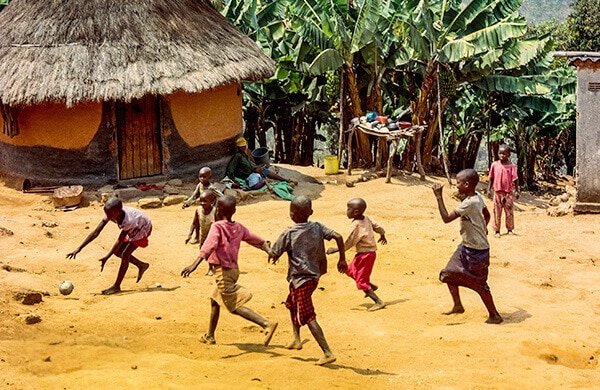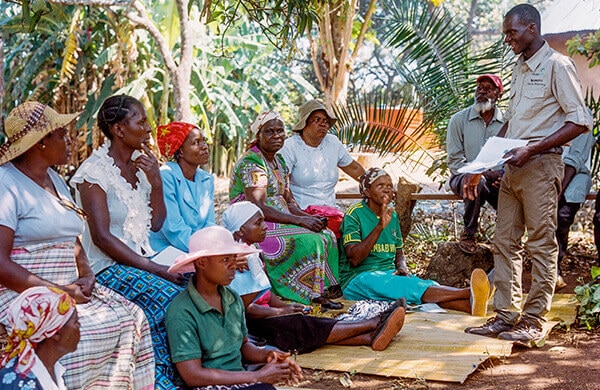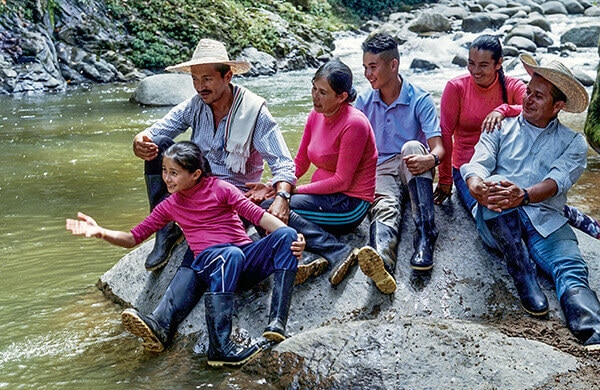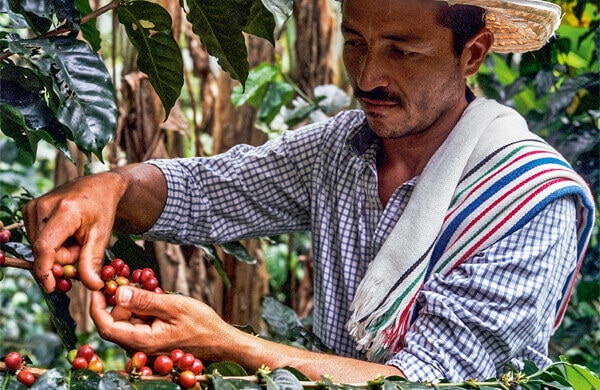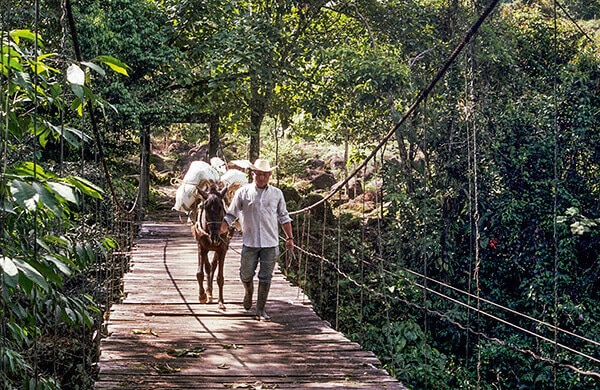
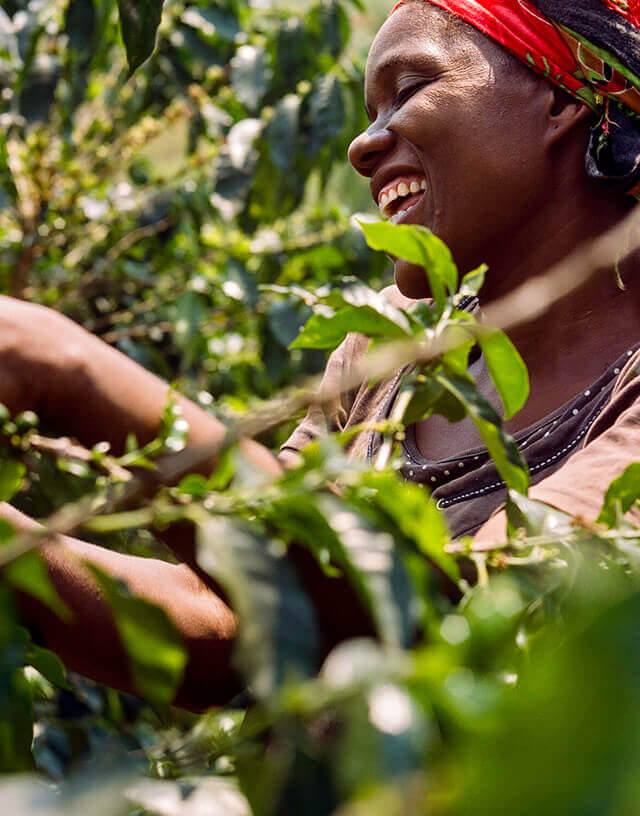
THE
REVIVAL
of exceptional coffees
of exceptional coffees
The ambitious goal of
Reviving Origins
Reviving Origins
Two new products for your coffee cups.
In Zimbabwe’s Honde valley and the Caquetá
region of Colombia, What Else? Shows you an initiative
launched by Nespresso to stimulate dwindling production
and secure a future for outstanding coffees: TAMUKA mu
ZIMBABWE and ESPERANZA de COLOMBIA.
In Zimbabwe’s Honde valley and the Caquetá
region of Colombia, What Else? Shows you an initiative
launched by Nespresso to stimulate dwindling production
and secure a future for outstanding coffees: TAMUKA mu
ZIMBABWE and ESPERANZA de COLOMBIA.


NEW PEACE IN ZIMBABWE
IN SHONA, ONE OF ZIMBABWE’S LARGEST ETHNIC LANGUAGES, Tamuka means “we are born”. And it is an appropriate name for TAMUKA mu ZIMBABWE coffee. This new coffee will be available at the same time every year as a semi-permanent fixture, while we wait for production to reach capacity so that it can go on permanent sale. Practically wiped off the map for decades due to internal crises and tensions, today it is reborn thanks to the Reviving Origins programme, which Nespresso is using to revive several global regions whose coffee producing traditions have been damaged. To sample the coffee where it is made, you need to set off from Harare, Zimbabwe’s capital, and chase the rising sun in the Eastern Highlands, the final rampart before Mozambique’s plains. That was exactly the route taken by Rena Effendi for National Geographic in partnership with Nespresso. In the Honde valley, ochres and greens intermingle beneath a sky that spills nourishing torrents throughout the rainy season, from October to March. The average altitude of 900m eases the mercury, and keeps the temperature at around 25°C, apart from during a short cold season. This climate makes the area’s high plateaus perfect ground for coffee plantations, as well as for tea and banana crops. Mixed farming is everywhere here, supported by excellent irrigation systems, and ensures the kind of diversity that does ecosystems good. There are no extensive plantations exhausting the soils, instead there are small family operations with more sustainable production volumes. The history of coffee production in Zimbabwe is as tumultuous as the Mutarazi falls, the second highest in Africa at 772m, whose thundering can be heard tens of kilometres away in the Honde Valley. It all began back in 1880, for local consumption. But that didn’t last. In 1920, disease decimated the coffee bushes, and it would take 40 years for coffee-growing to reappear. After 1960, the growth of coffee production was linked with colonialization. Plantations were owned by major landowners who held a monopoly over production until the year 2000. At the height of the tension in Zimbabwe, and against a backdrop of civil war, a wave of expropriations took place. Most owners sought exile in Namibia and South Africa, and coffee production all but disappeared. It only returned in 2017 as the country emerged from a severe financial crisis. More important, though, was a new regime that brought political stability, and the farmers of the Honde Valley gradually replanted their coffee bushes. Enter Nespresso, with its AAA programme to deliver training in farming techniques to local producers and support them in their desire to implement green production techniques. By guaranteeing fair prices, Nespresso enabled them to plan for long-term development with total peace of mind. And the result is TAMUKA mu ZIMBABWE, a highly aromatic coffee with good acidity and a long, complex finish (see tasting notes on page 8). It is a fractal image of the Shona people and their authentic, age-old agriculture
IN SHONA, ONE OF ZIMBABWE’S LARGEST ETHNIC LANGUAGES, Tamuka means “we are born”. And it is an appropriate name for TAMUKA mu ZIMBABWE coffee. This new coffee will be available at the same time every year as a semi-permanent fixture, while we wait for production to reach capacity so that it can go on permanent sale. Practically wiped off the map for decades due to internal crises and tensions, today it is reborn thanks to the Reviving Origins programme, which Nespresso is using to revive several global regions whose coffee producing traditions have been damaged. To sample the coffee where it is made, you need to set off from Harare, Zimbabwe’s capital, and chase the rising sun in the Eastern Highlands, the final rampart before Mozambique’s plains. That was exactly the route taken by Rena Effendi for National Geographic in partnership with Nespresso. In the Honde valley, ochres and greens intermingle beneath a sky that spills nourishing torrents throughout the rainy season, from October to March. The average altitude of 900m eases the mercury, and keeps the temperature at around 25°C, apart from during a short cold season. This climate makes the area’s high plateaus perfect ground for coffee plantations, as well as for tea and banana crops. Mixed farming is everywhere here, supported by excellent irrigation systems, and ensures the kind of diversity that does ecosystems good. There are no extensive plantations exhausting the soils, instead there are small family operations with more sustainable production volumes. The history of coffee production in Zimbabwe is as tumultuous as the Mutarazi falls, the second highest in Africa at 772m, whose thundering can be heard tens of kilometres away in the Honde Valley. It all began back in 1880, for local consumption. But that didn’t last. In 1920, disease decimated the coffee bushes, and it would take 40 years for coffee-growing to reappear. After 1960, the growth of coffee production was linked with colonialization. Plantations were owned by major landowners who held a monopoly over production until the year 2000. At the height of the tension in Zimbabwe, and against a backdrop of civil war, a wave of expropriations took place. Most owners sought exile in Namibia and South Africa, and coffee production all but disappeared. It only returned in 2017 as the country emerged from a severe financial crisis. More important, though, was a new regime that brought political stability, and the farmers of the Honde Valley gradually replanted their coffee bushes. Enter Nespresso, with its AAA programme to deliver training in farming techniques to local producers and support them in their desire to implement green production techniques. By guaranteeing fair prices, Nespresso enabled them to plan for long-term development with total peace of mind. And the result is TAMUKA mu ZIMBABWE, a highly aromatic coffee with good acidity and a long, complex finish (see tasting notes on page 8). It is a fractal image of the Shona people and their authentic, age-old agriculture


FRESH HOPE IN COLOMBIE
ITTAKES FIVE OR SIX HOURS OF WALKING FROM THE VALLEY before you get to the fincas, the local farms located more than 1000m up the hillsides of Colombia’s eastern cordillera. The local farming families know all too well that arabica, a fine and delicate coffee, only finds its full potential at this altitude. Overcoming the harsh climate and enduring the backbreaking labour, it is their refusal to quit that wins the day. Their devotion is what brought us ESPERANZA de COLOMBIA, a coffee produced in small batches and whose renaissance was made possible by the Reviving Origins programme. Launched as a semi-permanent coffee release, this arabica, known as “Colombia’s hope”, is only produced in small amounts for the time being. That is until Nespresso’s long-term investment bears its fruits and this new coffee can go on permanent sale. Caquetà is found in the pristine, wild landscape of southern Colombia, and was for a long-time victim to the conflicts that ravaged the country. But since just over ten years ago, a peace treaty brought with its fresh hope, and Nespresso immediately took action to offer a brighter future to local producers. Those who are willing to climb the rugged hillsides find themselves in a whole new world, where solidarity is more than just a word. There are no vast plantations here: production is on a more accessible scale, and mutual support is vital. It is a place where you will find a close-knit community that exists as it always has done and ensures the future of a tradition that is inseparable from Colombian culture. Indeed, coffee arrived here in the 18th century, and has always been one of the country’s greatest sources of wealth, thanks to both its quality and production volumes. During the civil war, though, plantations in these parts all but disappeared. But production is slowly recovering and is sure to expand in coming years. Or at least that is what the farmers supported by Nespresso are hoping. On the fincas of Caquetá, production still uses artisan techniques, but it is gradually modernising. With sustainable coffee-growing and increased yields, farmers have intelligently reignited the flame of ancient tradition passed down from their forebears. They are also guaranteed fair prices as part of the AAA programme, which has greatly improved their living conditions. A number of agronomists trained in Colombian universities are also there to support the coffee producers. Their technical expertise helps them to develop sustainable farming techniques that care for the environment. Cultivated in an atmosphere drenched in 80% humidity, and with sometimes cool nocturnal temperatures, ESPERANZA de COLOMBIA is the fruit of this contrasting, unique place. Indeed, officially Caquetá is part of the Amazon, albeit without a tropical climate. These Amazon roots are a matter of great pride for the farming families who are so attached to this unspoilt nature. And in every cup of this coffee from the Caq highlands, all of this seems to come through. Balanced, rounded, and slightly acidic, ESPERANZA de COLOMBIA (see tasting not on page 8) carries the hopes of a region that is coming back to life, and shares with us its dreams of a better world.
ITTAKES FIVE OR SIX HOURS OF WALKING FROM THE VALLEY before you get to the fincas, the local farms located more than 1000m up the hillsides of Colombia’s eastern cordillera. The local farming families know all too well that arabica, a fine and delicate coffee, only finds its full potential at this altitude. Overcoming the harsh climate and enduring the backbreaking labour, it is their refusal to quit that wins the day. Their devotion is what brought us ESPERANZA de COLOMBIA, a coffee produced in small batches and whose renaissance was made possible by the Reviving Origins programme. Launched as a semi-permanent coffee release, this arabica, known as “Colombia’s hope”, is only produced in small amounts for the time being. That is until Nespresso’s long-term investment bears its fruits and this new coffee can go on permanent sale. Caquetà is found in the pristine, wild landscape of southern Colombia, and was for a long-time victim to the conflicts that ravaged the country. But since just over ten years ago, a peace treaty brought with its fresh hope, and Nespresso immediately took action to offer a brighter future to local producers. Those who are willing to climb the rugged hillsides find themselves in a whole new world, where solidarity is more than just a word. There are no vast plantations here: production is on a more accessible scale, and mutual support is vital. It is a place where you will find a close-knit community that exists as it always has done and ensures the future of a tradition that is inseparable from Colombian culture. Indeed, coffee arrived here in the 18th century, and has always been one of the country’s greatest sources of wealth, thanks to both its quality and production volumes. During the civil war, though, plantations in these parts all but disappeared. But production is slowly recovering and is sure to expand in coming years. Or at least that is what the farmers supported by Nespresso are hoping. On the fincas of Caquetá, production still uses artisan techniques, but it is gradually modernising. With sustainable coffee-growing and increased yields, farmers have intelligently reignited the flame of ancient tradition passed down from their forebears. They are also guaranteed fair prices as part of the AAA programme, which has greatly improved their living conditions. A number of agronomists trained in Colombian universities are also there to support the coffee producers. Their technical expertise helps them to develop sustainable farming techniques that care for the environment. Cultivated in an atmosphere drenched in 80% humidity, and with sometimes cool nocturnal temperatures, ESPERANZA de COLOMBIA is the fruit of this contrasting, unique place. Indeed, officially Caquetá is part of the Amazon, albeit without a tropical climate. These Amazon roots are a matter of great pride for the farming families who are so attached to this unspoilt nature. And in every cup of this coffee from the Caq highlands, all of this seems to come through. Balanced, rounded, and slightly acidic, ESPERANZA de COLOMBIA (see tasting not on page 8) carries the hopes of a region that is coming back to life, and shares with us its dreams of a better world.
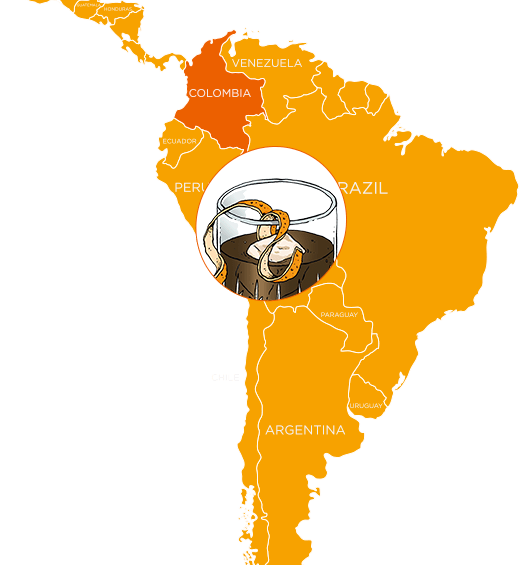
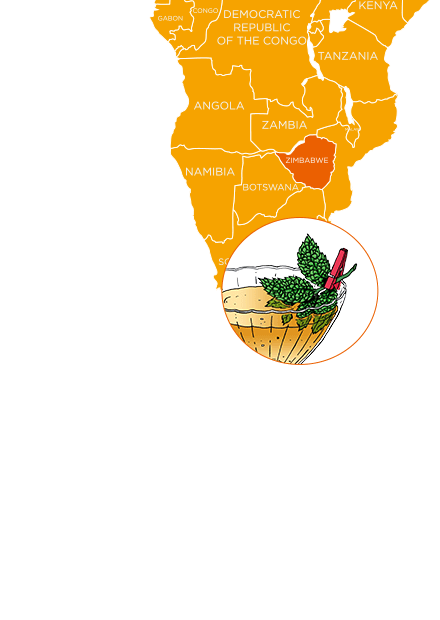
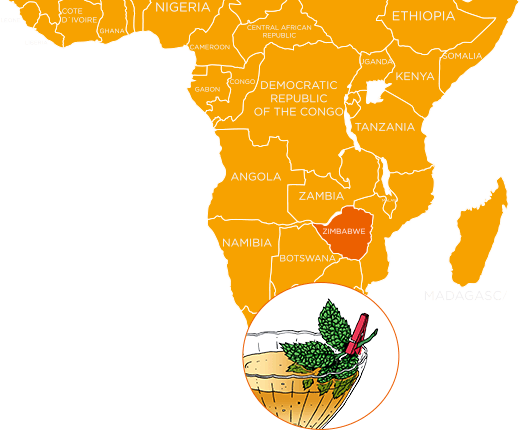
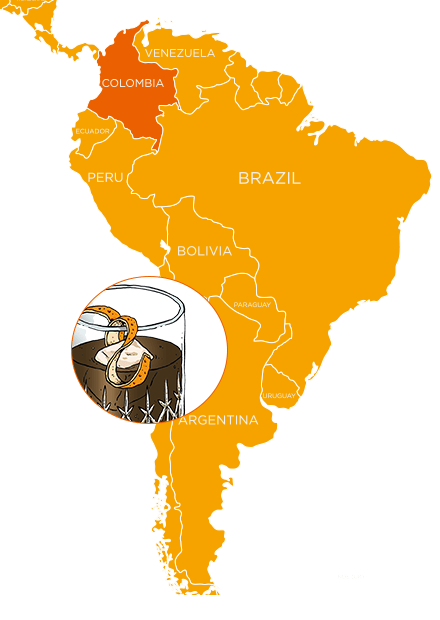
Cocktails
with far-flung
flavours
with far-flung
flavours
Slowly but surely, the Belgian cocktail
scene is growing, and Alfonse & Stuff
in Namur are its hottest representatives.
Craftsmanship takes pride of place in their
cocktails, through the ingredients, botanics,
and herbs they grow in their own greenhouse.
Valentin Norberg, cofounder of The Collective,
harnesses his mastery of mixology for
our ESPERANZA de COLOMBIA and TAMUKA
mu ZIMBABWE coffees.
The result? Two cocktails that reveal
the deep flavours of these once- forgotten beans.
scene is growing, and Alfonse & Stuff
in Namur are its hottest representatives.
Craftsmanship takes pride of place in their
cocktails, through the ingredients, botanics,
and herbs they grow in their own greenhouse.
Valentin Norberg, cofounder of The Collective,
harnesses his mastery of mixology for
our ESPERANZA de COLOMBIA and TAMUKA
mu ZIMBABWE coffees.
The result? Two cocktails that reveal
the deep flavours of these once- forgotten beans.
Heritage,
or the tasteful alliance
between Lillet, Mandarine
Napoléon and the
ESPERANZA de
COLOMBIA coffee.
or the tasteful alliance
between Lillet, Mandarine
Napoléon and the
ESPERANZA de
COLOMBIA coffee.
Discover Heritage
Wind Waker,
or the fresh combination
of aromatic white rum
& Italicus with
the TAMUKA mu
ZIMBABWE coffee.
or the fresh combination
of aromatic white rum
& Italicus with
the TAMUKA mu
ZIMBABWE coffee.
Discover Wind Waker




STANDING TOGETHER FOR A
SUSTAINABLE PLANET

Heritage
Ingredients
1 capsule of ESPERANZA de COLOMBIA (40 ml) • 40 ml Appleton Estate 12-Year-Old Rum • 15 ml Mandarine Napoléon • 10 ml Lillet blanc.
Preparation
Make an ESPERANZA de COLOMBIA espresso and leave to cool • Fill a mixing glass with ice cubes • Use a jigger (measurer), to add 40 ml of Appleton Estate rum, 15 ml of Mandarine Napoléon, 10 ml of Lillet blanc and the warm espresso • Stir with a cocktail spoon for 15 seconds • Sieve into a whisky glass over one ice cube, to avoid diluting the cocktail. Press orange zest over the cocktail and serve garnished with zest.
1 capsule of ESPERANZA de COLOMBIA (40 ml) • 40 ml Appleton Estate 12-Year-Old Rum • 15 ml Mandarine Napoléon • 10 ml Lillet blanc.
Preparation
Make an ESPERANZA de COLOMBIA espresso and leave to cool • Fill a mixing glass with ice cubes • Use a jigger (measurer), to add 40 ml of Appleton Estate rum, 15 ml of Mandarine Napoléon, 10 ml of Lillet blanc and the warm espresso • Stir with a cocktail spoon for 15 seconds • Sieve into a whisky glass over one ice cube, to avoid diluting the cocktail. Press orange zest over the cocktail and serve garnished with zest.
Tasting notes
“In ESPERANZA de COLOMBIA, you get a lot of roundedness and sensuality. You can taste hints of cocoa and roasted hazelnuts, but most of all that nice acidity that gives it its balance. An extremely delicate coffee that retains a unique personality.”
Alfonse & Stuff’s secret ingredients
“Nutty, woody, citrusy, and a long finish... Here citruses take pride of place, bringing their smooth, sour notes to accentuate the well-rounded coffee with its aromatic accents. The Le Lillet and Mandarine Napoléon – a blend of cognac and mandarins – plays this role with gusto and leaves it to the Jamaican rum to highlight the gourmet, roasted side of the coffee, while also adding depth to the cocktail.”
“In ESPERANZA de COLOMBIA, you get a lot of roundedness and sensuality. You can taste hints of cocoa and roasted hazelnuts, but most of all that nice acidity that gives it its balance. An extremely delicate coffee that retains a unique personality.”
Alfonse & Stuff’s secret ingredients
“Nutty, woody, citrusy, and a long finish... Here citruses take pride of place, bringing their smooth, sour notes to accentuate the well-rounded coffee with its aromatic accents. The Le Lillet and Mandarine Napoléon – a blend of cognac and mandarins – plays this role with gusto and leaves it to the Jamaican rum to highlight the gourmet, roasted side of the coffee, while also adding depth to the cocktail.”


Wild
Waker
Waker
Ingredients
1 capsule of TAMUKA mu ZIMBABWE (40 ml) • 40 ml of Trois Rivières cuvée de l’océan rum • 15 ml of Italicus liqueur • 1 pinch of artisan salt.
Preparation
Extract a TAMUKA mu ZIMBABWE espresso and leave to cool • Fill a mixing glass with ice and add a pinch of salt • Use a jigger (measurer) to add 40 ml of Trois Rivières rum, 15 ml of Italicus liqueur, and the warm espresso • For a more decadent cocktail, add 10 ml of liquid sugar • Sieve the cocktail into a Nick & Nora glass, cooled in the fridge • Garnish with a spring of mint secured with a mini clothes-peg.
1 capsule of TAMUKA mu ZIMBABWE (40 ml) • 40 ml of Trois Rivières cuvée de l’océan rum • 15 ml of Italicus liqueur • 1 pinch of artisan salt.
Preparation
Extract a TAMUKA mu ZIMBABWE espresso and leave to cool • Fill a mixing glass with ice and add a pinch of salt • Use a jigger (measurer) to add 40 ml of Trois Rivières rum, 15 ml of Italicus liqueur, and the warm espresso • For a more decadent cocktail, add 10 ml of liquid sugar • Sieve the cocktail into a Nick & Nora glass, cooled in the fridge • Garnish with a spring of mint secured with a mini clothes-peg.
Tasting notes
“TAMUKA mu ZIMBABWE is a fruity, acidic coffee. You get notes of red berries that are really fresh and lively. With its creamy mouthfeel and roundness, you also get extremely subtle toasted notes.”
Alfonse & Stuff’s secret ingredients
“Fresh, salty, and spicy: the combination of aromatic white rum (the sugar cane is grown by the sea) and the gentle acidity of the TAMUKA mu ZIMBABWE coffee will produce a really fresh drink. The Italicus, an Italian liqueur with bergamot and spices, will bring out and showcase the coffee’s floral side. The dash of sea salt gently brings out the saltiness of the rum. The subtle aroma of the mint garnish ties it all together.”
“TAMUKA mu ZIMBABWE is a fruity, acidic coffee. You get notes of red berries that are really fresh and lively. With its creamy mouthfeel and roundness, you also get extremely subtle toasted notes.”
Alfonse & Stuff’s secret ingredients
“Fresh, salty, and spicy: the combination of aromatic white rum (the sugar cane is grown by the sea) and the gentle acidity of the TAMUKA mu ZIMBABWE coffee will produce a really fresh drink. The Italicus, an Italian liqueur with bergamot and spices, will bring out and showcase the coffee’s floral side. The dash of sea salt gently brings out the saltiness of the rum. The subtle aroma of the mint garnish ties it all together.”

